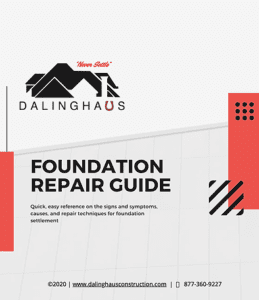What Is The Foundation Inspection Process?
I received a phone call from a homeowner in Laguna Niguel that had made an appointment for a foundation inspection.
She asked:
What will my specialist do when he arrives?
He will take measurements of the outside of your home, pictures of the outside and in the inside where there any cracks either on the floors or walls. He will also do a manometer reading in the home. If you have a raised foundation, he will go underneath your home and examine your posts, pads, foundation and the overall health of your crawlspace. (You can click here to watch a video of our Project Specialist, Mark, doing an inspection of a raised foundation home!)
How long will it take?
A foundation inspection typically takes 60-90 minutes.
Do I have to be around the whole time?
You don’t have to follow him around (you’re more than welcome to though) but you will definitely want to be there for him to discuss with you his findings.
Do I have to put my pets away?
You don’t have to put your animals away, I don’t think any of our specialists has ever bit an animal.🐶
Why are measurements of the outside taken?
Unlike some other companies, your specialist will draw your home to scale which he will later use to draw an in-depth, drawing that will be attached to your proposal. We do this because it makes it easier for you to get a clear visual of the repair plan. Not only for you, but for our office, production team, and any engineers that later may be involved.
How long will it take to get my proposal?
Most times, your specialist can have it to you before he leaves the appointment, but typically later that day or the next day. Before he leaves he will make sure your email is correct because you will receive your proposal via email.
What is a manometer and how will a manometer reading help?
A manometer is a device that measures elevations by measuring vertical pressure from a pair of proprietary fluids sealed in its cord. It’s not as complex as it sounds and your specialist will be more than happy to show you how it works. The specialist will pinpoint the most level part of your home, and from that point, he sets down the base unit. That’s his zero benchmark. The specialist will need to have access to each of the rooms, and will need to be as close to the exterior wall as possible. He can manage around furniture and household items. He will walk around your home and take a series of measurements. This will show us which areas, if any, of your foundation, are lower or higher.
If the readings show that your floor elevations are lower in some areas, that will mean your home is settling. Some foundation settlement is normal. The engineers standard is .5 inches of settlement in 10 linear feet. Settlement can be caused by expansive soils, poor compaction and sloping to name just a few. If the readings show high points in the foundation, that could mean that the slab is showing signs of heaving. That could be caused by root intrusion or a possible water leak.
Also, the benchmark readings are also used as reference for the production crew.
With all of the information gathered, your specialist can make an informed decision on what repair, if any, will be the best for you.
Read more: How To Pay For Foundation Repair
How will I know that he’s doing it correctly?
Our specialists are well trained, and extremely knowledgeable. They have been doing foundation inspections, and presenting solutions for many many years.
This is your home. Not just your biggest investment, but also where you and your family live! We take this very seriously. We would not jeopardize that with a wrong repair, or suggest any more than what you need.
You can also read: Are You a Candidate for a Dalinghaus Foundation Repair Inspection?






